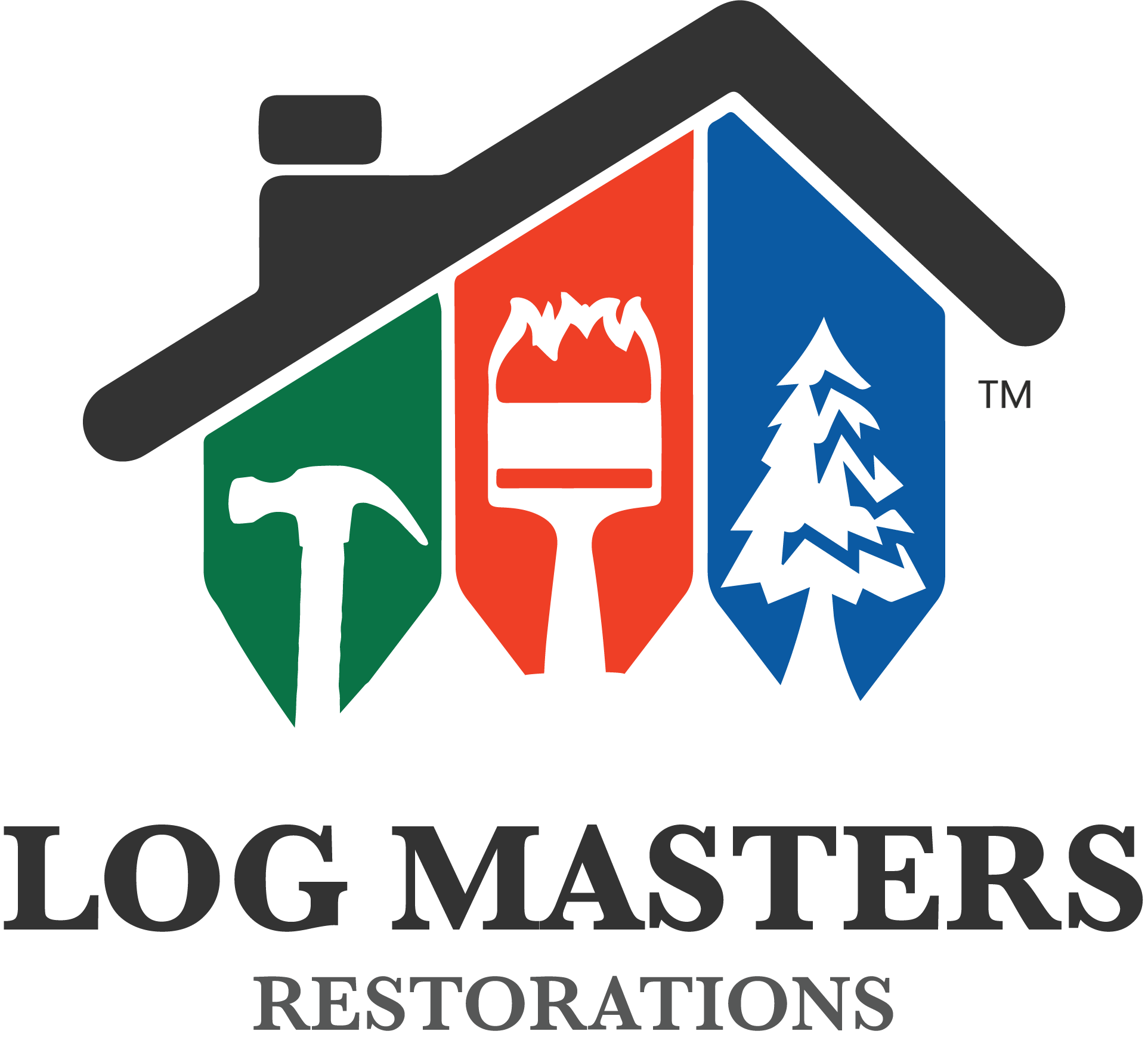Looking at your freshly media-blasted logs, you can’t help but admire the vibrant wood grain brought to life. The natural beauty of the blonde or caramel-colored logs might make you question whether applying a stain is necessary. After all, the untouched look is stunning. But if you value a healthy, low-maintenance log cabin that stands the test of time, this decision requires careful consideration.
You may wonder:
- Can a clear finish protect my log cabin?
- How will a stain affect the cabin’s appearance and my budget?
- Could an unnatural stain ruin my pristine log home?
These are typical concerns for log cabin homeowners. This article will explore the differences between clear finishes and stains and help you decide what’s best for your log home. Are you interested in our staining services?
Stain or Clear Finish: What’s the Difference?
Should you stain your log home or use only a clear finish? The answer depends on several factors, including sun exposure and humidity in your area. While clear finishes highlight the natural beauty of your logs, they often lack the UV protection needed to preserve your home. On the other hand, stains provide both security and aesthetic options. Here’s what you need to know:

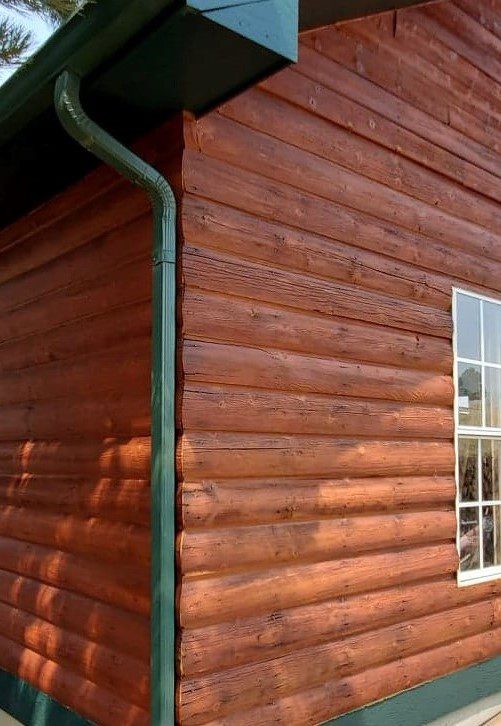
The Role of UV Protection
Stains with UV ray protection shield your logs from the sun’s harmful effects, which clear finishes generally cannot do. Without UV protection, your logs are vulnerable to:
- Sunburn: Logs can turn gray, resembling sun-damaged skin.
- Cracking and Peeling: The outer layers of the logs deteriorate, leading to exposed, damaged wood.
- Moisture Intrusion: Unprotected logs absorb more water, increasing the risk of rot and pest infestation.
While some homeowners initially opt for clear finishes to preserve the natural wood tone, they often reapply the finish frequently, leading to higher maintenance costs and potential long-term damage.
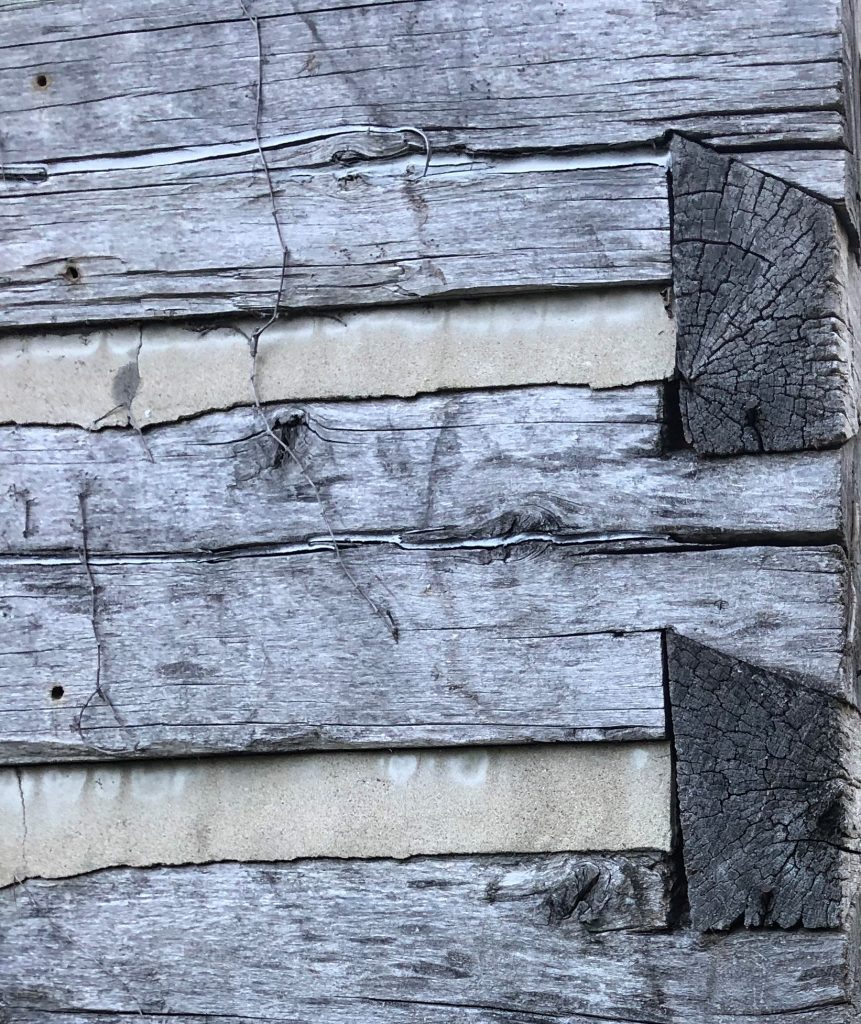
How UV Rays Damage Logs
Logs are more susceptible to UV damage because they lack the bark that naturally protects trees. Similar to how your skin can blister, crack, and peel without sun protection, logs experience the same deterioration. This exposes the wood to additional threats like moisture and pests.
Blistering Explained
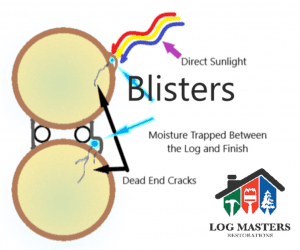
Blistering explained
Blistering occurs when moisture trapped beneath the finish rises to the surface. This can happen when:
- The finish is applied too thickly.
- The log’s Equilibrium Moisture Content (EMC) is too high compared to the area’s humidity levels.
For example, the EMC in Springfield, Missouri, ranges from 12.6% to 14.0% annually, while in Colorado Springs, Colorado, it’s 9.1% to 10.4%. A moisture meter ($45-$700 online) can help determine if your logs are ready to finish.
A penetrating finish is often recommended, as it allows trapped moisture to escape, reducing the risk of blistering and peeling.
For more information on EMC and how it affects your log home, go to “Log Homeowner Should Know EMC for Their Region“.
Equilibrium Moisture Content (EMC) Chart
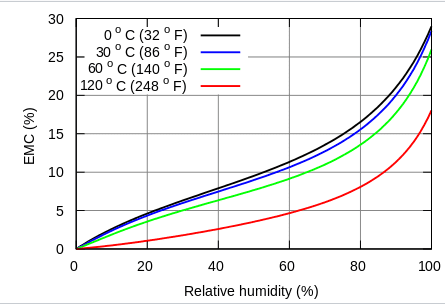
.
Moisture: The #1 Enemy of Log Homes
Excessive moisture can lead to:
- Mold and Mildew: These fungi thrive in damp environments and can discolor your logs.
- Rot: Internal log rot spreads quickly, compromising structural integrity. Rot often goes unnoticed until significant damage occurs.
- Pest Infestation: Rot attracts carpenter ants, termites, and other pests, further degrading the wood.
Protecting your logs from moisture with a high-quality stain is crucial to avoid these issues.
Recommendations
We recommend using a stain with UV ray protection to balance aesthetics, safety, and maintenance. Products like Perma-Chink Lifeline Ultra 7 or Sashco Transformation Stain are excellent choices, trusted by professional log home builders. These stains are available in lighter shades to mimic the natural look of your logs while providing superior protection.
Why Avoid Clear Finishes?
Clear finishes, while visually appealing, lack stains’ durability and UV resistance. This leads to frequent reapplications and increased vulnerability to moisture and sun damage. Over time, the cost and effort to maintain a clear finish outweigh the benefits.
Consult a Professional
Maintaining your log home is a long-term investment. Consulting a professional can help protect your logs, and your cabin retains its beauty for years. Contact our team at Log Masters for expert advice and services tailored to your log home’s needs.
Your log home can remain stunning and well-protected with the right stain and maintenance plan. Don’t compromise the longevity of your investment for short-term visual appeal. Choose a solution that balances beauty, protection, and budget.
Log Structures and Durability
Professional Expectations of Log Masters
